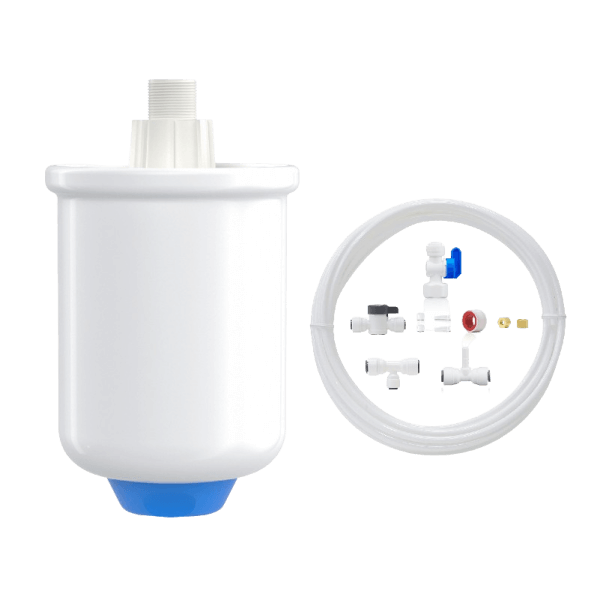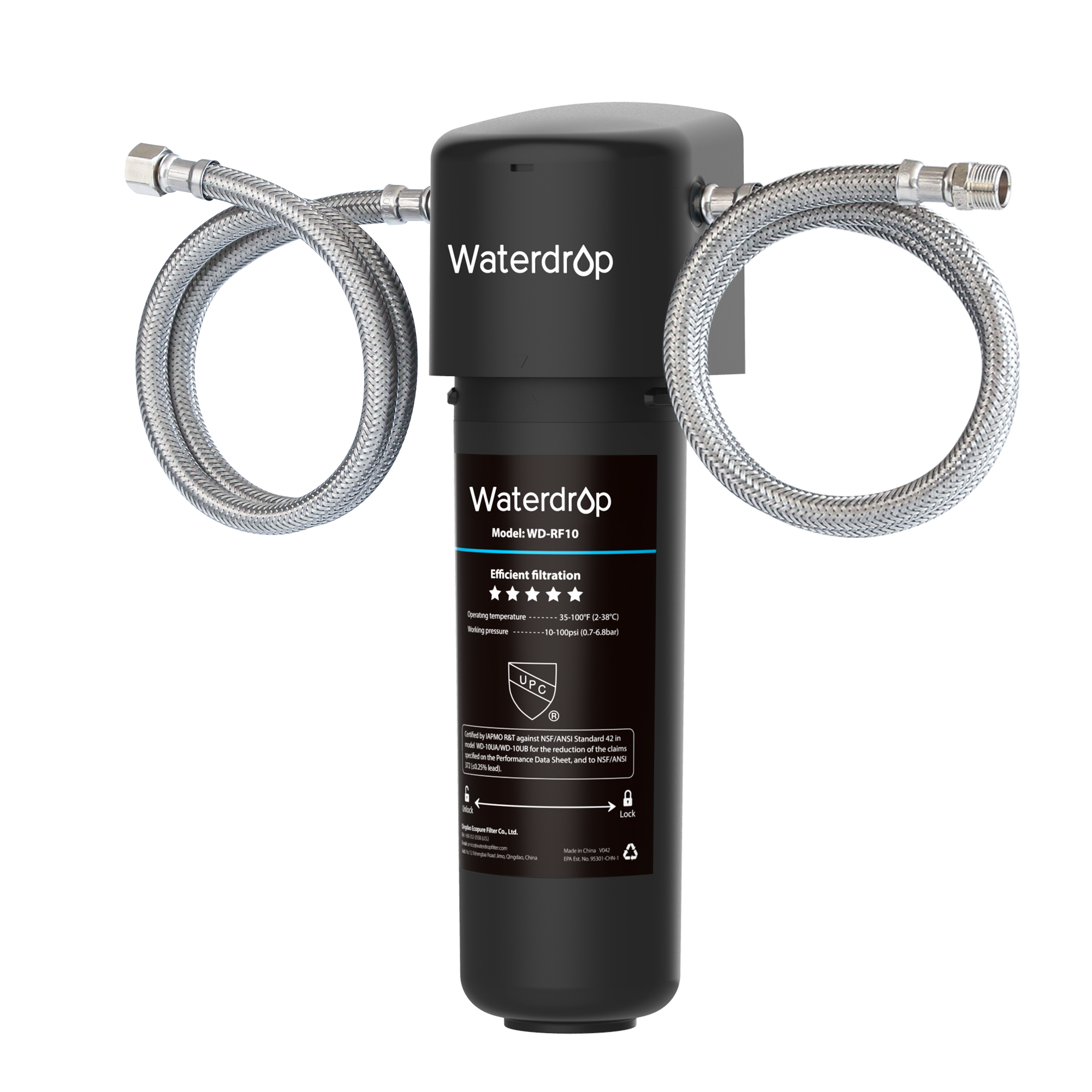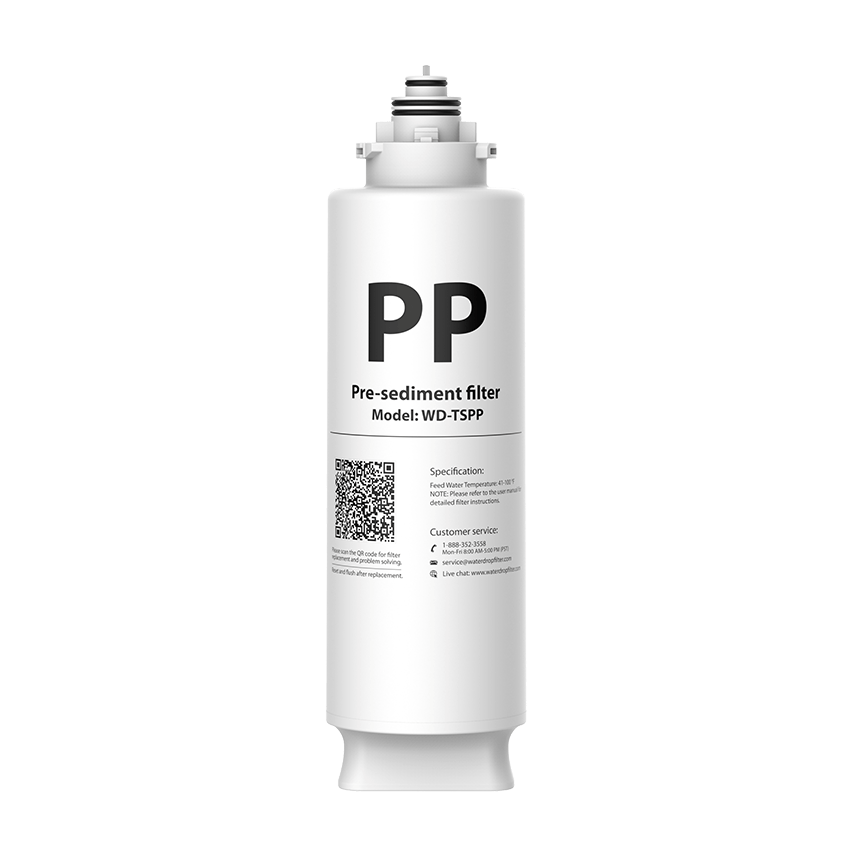Qu'est-ce que le Club Soda ?
par Dr. Jonathan Doyle - Updated January 19, 2024
La création du club soda ne nécessite pas l’introduction de dioxyde de carbone dans l’atmosphère.
l’eau ; au lieu de cela, il faut la production naturelle de dioxyde de carbone.
Il est possible de fabriquer du soda pur en combinant de l’eau purifiée avec du bicarbonate de soude,
également appelé sodium
bicarbonate , dans la communauté scientifique. L'ajout de dioxyde de carbone supplémentaire ne nécessite pas l'utilisation de
un équipement générant une pression instantanée et intense. Le bicarbonate de soude et l'eau purifiée peuvent être
pour produire du soda. Si vous souhaitez préparer votre club soda, sa saveur sera améliorée en utilisant de l'eau d'une
Qualité supérieure, filtrée par osmose inverse . Plus que les autres boissons sucrées,
Le soda club contient souvent moins de calories.
Nous voyons un nombre considérable de bulles de dioxyde de carbone gazeux
se développe dans la soude après ajout de bicarbonate de sodium au mélange. Cependant, lorsque l'eau est chauffée à
température et pression moyennes, les bulles de dioxyde de carbone dans l'eau se brisent rapidement et le soda est
remis en bouteille comme une boisson standard sans composants pétillants.
L'histoire du Club Soda
Au cours du XVIIIe siècle, les humains ont commencé à reproduire les eaux minérales existantes naturellement.
grâce aux avancées de la chimie et de l'industrie. Au début, une quantité accrue de
L'eau riche en minéraux contenant du gaz carbonique était consommée par les humains en raison de sa saveur distinctive et de la
les prétendus bienfaits pour la santé qu’il offrait.
Un scientifique anglais, Joseph Priestley , a inventé les boissons gazeuses en 1772 lorsqu'il a découvert comment
pour ajouter du dioxyde de carbone à l'eau. Ce fut le début du développement des boissons gazeuses. Plus tard
Johann Jacob Schweppe, l'autre citoyen britannique, a réussi dans la fabrication commerciale de
boissons gazeuses.

Une quantité importante d’eau gazeuse a été fabriquée à grande échelle
Tout au long du XIXe siècle, en raison de la révolution industrielle. En boisson et en mélange de boissons alcoolisées,
la boisson gazeuse a été utilisée dans ces deux cas.
Plus tard au XIXe siècle et au début du XXe siècle, des sociétés comme
Joseph Priestley a commencé
fabrication et distribution de boissons gazeuses aux saveurs variées, dont le soda club fade. Ce fut le début
naissance de l'industrie des boissons gazeuses, qui a commencé à prendre forme au cours de cette période.
Au début du XXe siècle, l’utilisation généralisée du gaz dans
Les cylindres et le développement de la technologie de réfrigération ont créé un environnement plus propice au commerce
fabrication. Il était courant pour les pubs et les restaurants de servir du soda club comme boisson.
Au cours de la seconde moitié du XXe siècle, on a assisté à une prise de conscience croissante des problèmes de santé.
et les inquiétudes concernant l'utilisation de boissons sucrées. Ceci a conduit à la popularité du soda sans sucre comme
alternative.
Au XXIe siècle, la croissance des secteurs de la restauration et de l’outre-mer
contribué à la popularité du soda. Ce dernier est ainsi progressivement devenu une base pour
des cocktails qui ont été consommés dans le monde entier.

Grâce à des efforts successifs de marketing et de promotion, la boisson a connu un
niveau de popularité plus élevé, et il fait actuellement partie des boissons standard que l'on boit le plus souvent sur
marché international.
Il est de plus en plus courant de trouver du soda dans les armoires à boissons des maisons, et
Il devient également une boisson incontournable dans les pubs et les restaurants. Outre son utilisation fréquente dans les boissons
n'incluant pas l'alcool, le club soda est également devenu profondément ancré dans la culture de la cuisine moderne.
Différents types d'eau gazeuse
Si vous versez plusieurs types de sodas dans des verres séparés et que vous les placez en rangée,
Vous constaterez une légère variation entre l'eau de Seltz, l'eau gazeuse, le soda et le tonic. En revanche,
une chose peut être dite avec une certitude absolue : la saveur et le processus de création de ces eaux gazeuses sont
distinct.
Ces quatre types d’eau gazeuse sont tous des solutions hypocaloriques, bien que leur
Les saveurs et les compositions diffèrent. Le choix de chaque variété est déterminé par les goûts de chacun et
usage planifié, pouvant inclure la consommation occasionnelle de boissons ou de mélanges. Lorsque nous comprenons leurs différences,
mieux, nous serons mieux en mesure de faire un choix éclairé quant au moment où les acquérir.
Club Soda vs Eau tonique
Le processus exact accomplit la production de bulles dans le club soda et le tonic
L'eau, introduisant du dioxyde de carbone (CO2) dans l'eau consommée. Les bulles ne différencient pas l'eau tonique.
du soda club ; les composants et les saveurs supplémentaires font l'affaire.

Le soda club a une saveur quelque peu salée et est par ailleurs relativement propre.
Cette saveur est obtenue grâce au bicarbonate de soude, au citrate de sodium et à plusieurs minéraux. Elle peut être consommée pure.
forme, comme son nom l'indique, mais il est également excellent pour le mélange.
Le processus de fabrication de l'eau tonique comprend l'ajout de quinine, qui
est l'un des ingrédients de l'eau tonique. La quinine est un médicament initialement utilisé pour traiter le paludisme. Son mécanisme d'action
l'action consiste à supprimer le parasite responsable du paludisme, le Plasmodium
falciparum . Cela est dû au goût amer caractéristique de la quinine, qui confère à l'eau tonique une
goût amer que celui des autres boissons gazeuses. Les édulcorants tels que le sirop de maïs à haute teneur en fructose ou le sucre sont
On les ajoute parfois pour rehausser la saveur des ingrédients. Par conséquent, l'eau tonique contient plus de calories que
dans d'autres boissons.
La seule chose que l'eau tonique et les autres boissons pétillantes ont en commun est la
Les bulles qu'elles contiennent. Bien qu'il s'agisse d'eau tonique, il serait plus juste de la définir comme une boisson gazeuse.
aux arômes de quinine et de sucre. Cette évaluation serait plus juste. Il n'est pas surprenant que
mélange classique de gin et
Le tonique est le combo le plus délicieux.
Club Soda vs eau gazeuse
L'eau gazeuse et le soda peuvent être gazéifiés par le processus d'infusion.
dioxyde de carbone dans les récipients. En revanche, l'eau gazeuse met davantage l'accent sur les minéraux et
bulles dérivées de sources naturelles, contrairement au soda club, qui contient souvent des minéraux artificiels pour
simuler la saveur de l’eau naturelle contenant des minéraux.

Le soda club contient souvent un peu de sel, ce qui lui donne un goût légèrement salé.
contrairement à l'eau gazeuse, qui est produite principalement en ajoutant du dioxyde de carbone à l'eau ordinaire, ce qui lui donne une
saveur comparable à celle de l'eau de source naturelle mais avec une impression similaire de bulles.
En raison de sa saveur légèrement salée, le soda club est fréquemment utilisé comme base dans
cocktails ou autres boissons. En effet, le soda rehausse et équilibre la saveur des boissons mélangées.
D'autre part, l'eau pétillante est souvent consommée seule comme un rafraîchissement sans calories et sans alcool, ou
comme base pour mélanger des jus de fruits ou créer des cocktails sans alcool, comme c'est le cas de nombreuses marques d'eau gazeuse .
Club Soda vs Eau de Seltz
De nombreux composants qui composent le soda et l'eau gazeuse sont les mêmes.
La saveur de l'eau de Seltz est plus fraîche ou plus neutre que celle du soda club car elle ne contient aucun additif supplémentaire.
Sels ou minéraux. C'est la différence entre les deux boissons.

En raison de son goût légèrement salé, le club soda est un choix populaire parmi certains
pour ajouter une touche de saveur supplémentaire aux cocktails et autres boissons. Certains, sur
D'autre part, ils aiment le goût de l'eau de Seltz, qui est neutre, et ils la consomment soit directement à partir du
en bouteille ou dans des boissons lorsqu'ils ne souhaitent pas ajouter d'additifs aromatiques supplémentaires.
De plus, pour générer une variété de saveurs, le seltz peut parfois contenir
plusieurs autres composants aromatiques naturels. Vous pouvez utiliser l'un ou l'autre pour donner à un plat une texture mousseuse ou pour créer un
boisson qui ne contient pas de sucre pendant la cuisson.
Club Soda vs Eau gazeuse
Beaucoup se demandent : « L’eau gazeuse est-elle la même chose que le club soda ? » Cependant, le terme « eau gazeuse » peut
Désigne également un produit obtenu par le bouillonnement d'une eau minérale. En général, « eau gazeuse » désigne une eau non aromatisée.
avec des bulles gazeuses sans aucun autre composant. Grâce à l'utilisation de soda, il est possible de mélanger
deux pour produire un cocktail tout aussi efficace.
L’eau gazeuse est-elle bonne pour vous ?
Dans le monde d’aujourd’hui, il existe une idée fausse très répandue selon laquelle l’eau gazeuse est
identique au cola et nuit à la santé. La consommation d'eau gazeuse a plusieurs effets positifs sur la santé.
sa santé.
Améliorer une bonne hydratation
L'eau gazeuse est le plus souvent utilisée pour s'hydrater. Non seulement elle satisfait nos besoins
soif, mais elle peut aussi restaurer les électrolytes dans notre corps et nous fournir de l'eau. Après une longue
période d'activité intensive ou d'exposition à des températures extrêmes, boire du soda peut aider votre corps à se rétablir rapidement
reconstituer ses réserves en eau et en énergie, réduisant ainsi la fatigue et la déshydratation. Ces bienfaits peuvent être obtenus en
Boire du soda. L'hydratation est particulièrement importante à certaines saisons.
En plus d'être bu avec une large gamme d'autres boissons, il est largement utilisé
comme substitut à l'eau. Cela permet à ceux qui n'aiment pas boire d'eau de s'en procurer plus facilement.
améliore leur volonté de le boire.
Maintenir l'équilibre du pH
De plus, cela pourrait aider le corps à maintenir l'équilibre de son pH.
bien que notre corps soit tenu d'avoir un certain équilibre acido-basique, de nombreuses personnes ont des niveaux de pH acides en raison
aux décisions qu'ils prennent concernant leur alimentation et leur mode de vie. La teneur en carbonate peut neutraliser l'acidité de l'eau.
l'organisme, ce qui contribue à maintenir l'équilibre acido-basique. Maintenir cet équilibre peut également prévenir certains
maladies, ce qui est essentiel à notre santé.

Pour faciliter la digestion
La constipation et la dyspepsie sont soulagées par la consommation d'eau gazeuse.
neutraliser l'acide gastrique, ce qui est bénéfique pour l'alimentation de l'estomac ; il peut diminuer l'impact stimulant de
acide gastrique ; il peut protéger l'estomac de diverses manières ; il peut maintenir l'équilibre acido-basique du corps ; il
peut améliorer la digestion gastro-intestinale et stimuler le péristaltisme intestinal.
L’eau gazeuse est-elle mauvaise pour vous ?
De nombreuses personnes apprécient la saveur revigorante de l’eau gazeuse.
Le revers de la médaille est que boire avec excès peut être nocif pour la santé. Même en tenant compte
Compte tenu de ces avantages potentiels, boire une quantité excessive d'eau gazeuse pourrait être une source de
inconfort.
Détérioration des dents
L'acide carbonique présent dans l'eau gazeuse a le potentiel d'augmenter la
l'acidité des boissons. Une consommation excessive de boissons acides peut avoir des conséquences néfastes sur les dents,
y compris la déminéralisation de l'émail dentaire, une augmentation du risque de caries dentaires et le développement
de caries et de sensibilité dentaire. Cependant, l'eau gazeuse sans sucre est beaucoup moins dangereuse.
pour la santé que les boissons gazeuses contenant du sucre. L'eau gazeuse sans sucre ajouté
le sucre ou les arômes sont une alternative moins nocive pour la santé.

Le diabète, ainsi que l'obésité
Certaines boissons gazeuses contiennent une quantité importante de sucre. Consommer une
Une consommation excessive de sucre peut entraîner des problèmes corporels de diverses manières. En premier lieu,
Le sucre est une source d'énergie rapide. Lorsqu'il n'est pas utilisé rapidement, il s'accumule dans l'organisme, ce qui entraîne
une augmentation du poids corporel et peut même entraîner l'obésité. Une consommation excessive de sucre peut entraîner une augmentation importante du poids corporel.
des fluctuations du taux de sucre dans le sang et peuvent également perturber l'homéostasie des niveaux de sucre dans le sang dans tout le corps.
Des fluctuations élevées de la glycémie qui durent pendant une période prolongée peuvent entraîner des maladies chroniques à long terme telles que
diabète.

Ballonnements et gaz
L'eau gazeuse est principalement composée de dioxyde de carbone, le composant principal. Notre
Le corps produit des ions carbonate en absorbant le dioxyde de carbone que nous consommons. Une quantité excessive de
les ions carbonate pousseront l'estomac à produire plus d'acide, ce qui va perturber l'estomac et finalement conduire
à une quantité excessive d'acide produite par l'estomac. Outre la gastrite et les ulcères gastriques,
La consommation de grandes quantités de soda sur une période prolongée peut également contribuer à l’apparition d’autres troubles gastriques .









